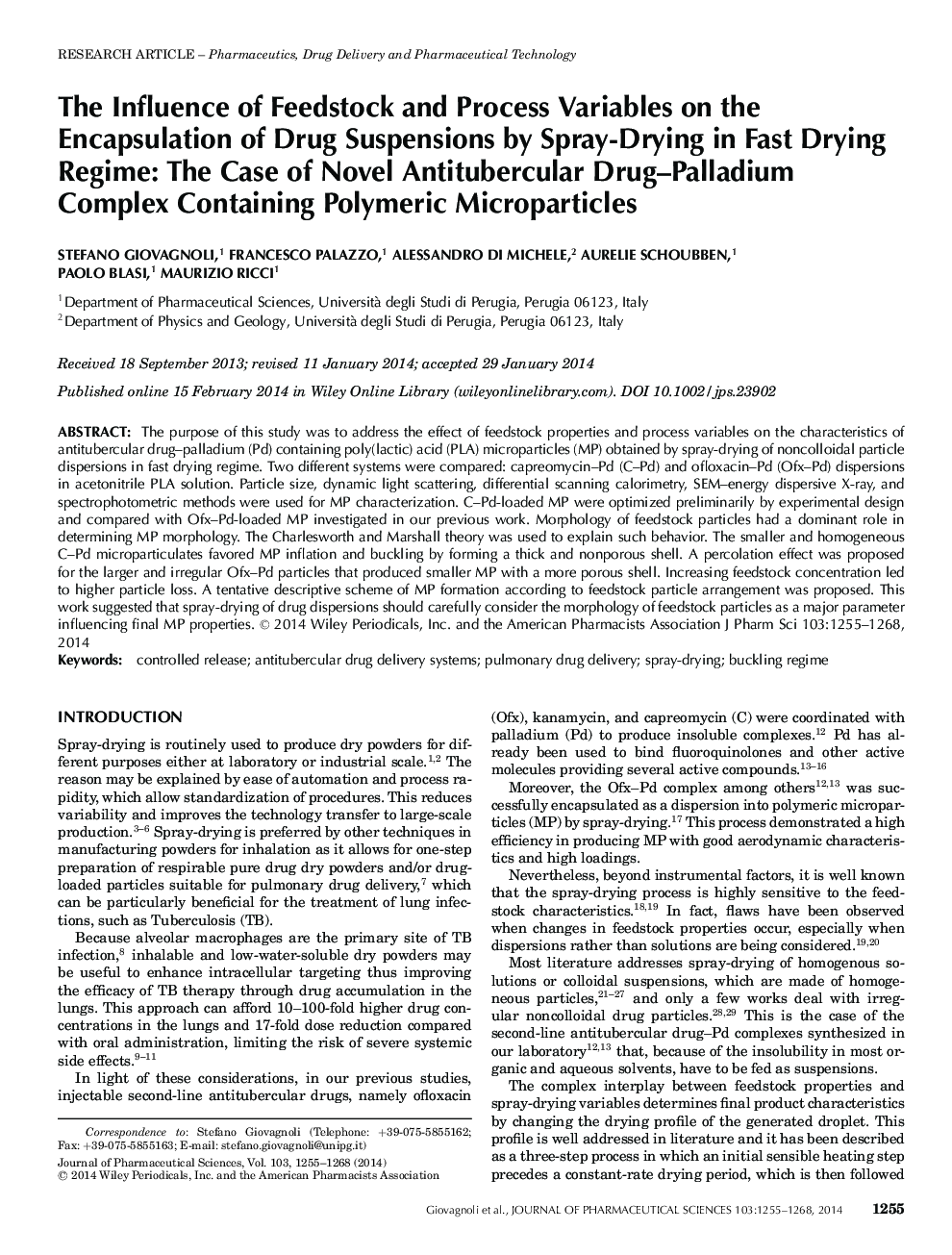| Article ID | Journal | Published Year | Pages | File Type |
|---|---|---|---|---|
| 10162398 | Journal of Pharmaceutical Sciences | 2014 | 14 Pages |
Abstract
The purpose of this study was to address the effect of feedstock properties and process variables on the characteristics of antitubercular drug-palladium (Pd) containing poly(lactic) acid (PLA) microparticles (MP) obtained by sprayâdrying of noncolloidal particle dispersions in fast drying regime. Two different systems were compared: capreomycin-Pd (C-Pd) and ofloxacin-Pd (Ofx-Pd) dispersions in acetonitrile PLA solution. Particle size, dynamic light scattering, differential scanning calorimetry, SEM-energy dispersive Xâray, and spectrophotometric methods were used for MP characterization. C-Pdâloaded MP were optimized preliminarily by experimental design and compared with Ofx-Pdâloaded MP investigated in our previous work. Morphology of feedstock particles had a dominant role in determining MP morphology. The Charlesworth and Marshall theory was used to explain such behavior. The smaller and homogeneous C-Pd microparticulates favored MP inflation and buckling by forming a thick and nonporous shell. A percolation effect was proposed for the larger and irregular Ofx-Pd particles that produced smaller MP with a more porous shell. Increasing feedstock concentration led to higher particle loss. A tentative descriptive scheme of MP formation according to feedstock particle arrangement was proposed. This work suggested that sprayâdrying of drug dispersions should carefully consider the morphology of feedstock particles as a major parameter influencing final MP properties. © 2014 Wiley Periodicals, Inc. and the American Pharmacists Association J Pharm Sci 103:1255-1268, 2014
Related Topics
Health Sciences
Pharmacology, Toxicology and Pharmaceutical Science
Drug Discovery
Authors
Stefano Giovagnoli, Francesco Palazzo, Alessandro Di Michele, Aurelie Schoubben, Paolo Blasi, Maurizio Ricci,
